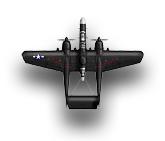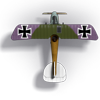All i found was that there was a transiever for some kind of direction finding as the missions were at nigt.
Was the radio operator the fellow sitting behind pilots in front of a black box? I saw that on a googled out model?
What was the transiever like - a spark gap morse code type?
Does anybody have a picture or know any details?
And - why did it need two pilots?
Thank you. Google doesn't show or say that much.





 Reply With Quote
Reply With Quote










Bookmarks